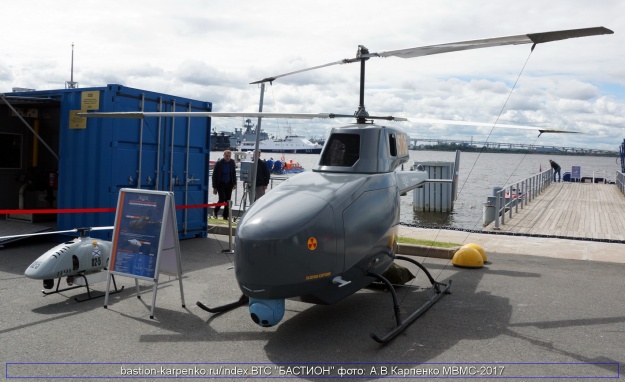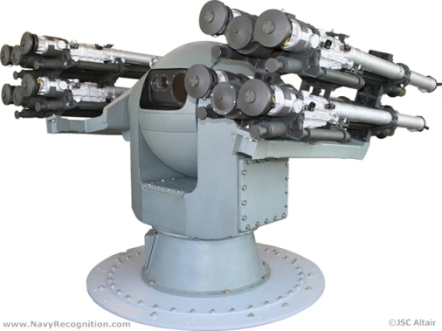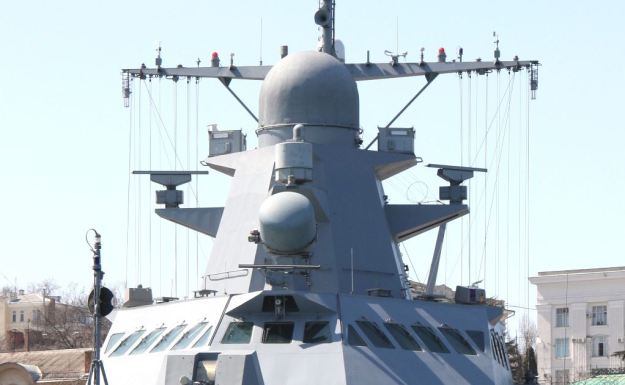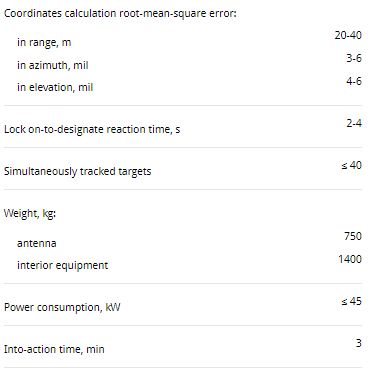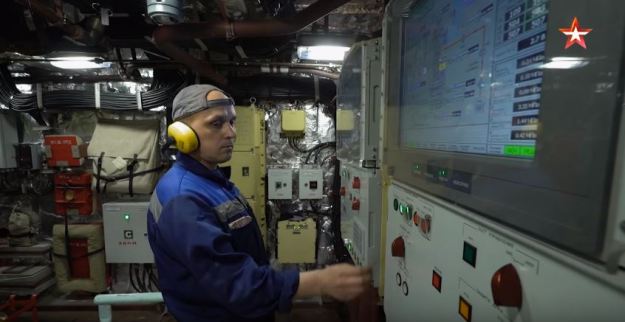Shenyang J-11, or Jian-11, is a Chinese multirole fighter aircraft manufactured by Shenyang Aircraft Corporation (SAC). It is a licensed-built variant of the Sukhoi Su-27SK (Nato code name: Flanker) fighter. The J-11 is operated by the People’s Liberation Army Air Force (PLAAF).

The PLA is now operating or developing no less than eight distinct variants or derivatives of the Russian developed Flanker fighter, and in 2012 was reported to be negotiating access to the Su-35S, which constitutes a ninth variant.
This is greater diversity in variants of the Flanker than the diversity of the Russian Federation armed forces which operate the Su-27S Flanker B, Su-27UB Flanker C, Su-27M/Su-35 Flanker E, Su-27MUB/Su-35UB Flanker E, Su-27K/Su-33 Flanker D and in 2012, the Su-35S.
The common perception, reinforced by Russian media disinformation, is that Chinese Flankers are either Russian sourced, or exact clones of Russian variants. This is not correct, as the only Chinese built Flankers identical to Russian aircraft were the 100 licence built J-11A Flanker B aircraft, identical to Russian supplied Su-27SK Flanker B.
While the first indigenous variant, the J-11B, uses the basic Su-27SK Flanker B airframe, it was mostly unique systems, many different from the Russian systems in the Su-27SK.
The dual seat J-11BS is a fusion of the J-11B and Su-27UBK designs. Source ausairpower.net
Sukhoi and SAC signed a $2.5bn contract for the co-production of 200 Su-27SK fighters as the J-11 in February 1996. As part of this contract, Sukhoi was responsible for supplying components to assemble the aircraft at SAC.
PLAAF Su-27SK

Image @japantimes.co.jp
The Su-27 (Nato designation Flanker) is the front-line fighter aircraft designed by the Sukhoi Design Bureau and manufactured by Irkut Corporation. The export version is the Su-27SK.
The aircraft is equipped to operate autonomously in combat over hostile territory, in escort of deep-penetration strike aircraft and in the suppression of enemy airfields. The aircraft provides general air defence in cooperation with ground and airborne control stations. A naval variant with folding wings, the Su-33, exists.

Su-27SK cockpit

Su-27 entered production in 1982 and is in service with Russia, Ukraine, Belarus, Kazakhstan, Indonesia, Uzbekistan and Vietnam, and is built under license in China as the F-11. A variant, the Su-30MK, has been sold to India with licensed local production. Source airforce-technology.com

Helmet-mounted sight (HMS) Image @chinesemilitaryreview.blogspot.com
The Su-27 is a highly-agile aircraft that can outmanoeuvre most of Western 4th-generation fighters. The outstanding aerodynamic performance of the aircraft, combined with its beyond-visual-range (BVR) capability, unique infrared search and tracking (IRST) system and helmet-mounted sight (HMS), the R-27 and R-73 air-to-air missiles (AAM), the wingtip-mounted electronic countermeasure (ECM) pods, and the 1,400 km combat radius without refuelling, gave the PLAAF the edge over most of its rivals air forces in Asia.

Photo by Chen Qingshun
The fighter is a large twin-engine aircraft with twin air intakes and twin tails. A tail beam between the engine nozzles contains equipment, fuel tank and the brake-chute casing. The powerplant consists of two Lyulka Engine Design Bureau (NPO Saturn) AL-31F turbofan engines, each rated at 17,857lb (79.43kN) dry and 27,557lb st (122.58kN) with afterburning. The aircraft only use internal fuel tank and does not carry auxiliary tanks, leaving valuable hard point spaces to carry extra weapons.
AL-31F turbofan engine

ruaviation.com
The Su-27s in service with the PLAAF are equipped with the NIIP Tikhomirov N001E Myech coherent pulse-Doppler radar with track-while-scan and ‘look-down/shoot-down’ capability. The radar has a maximum search range of 240 km; a target engagement range of 80—100 km in the forward hemisphere and 40 km in the rear hemisphere for a fighter-sized target. The radar has the capacity to search, detect and track up to 10 aerial targets with automatic threat assessment and prioritisation, and engage two simultaneously.
Tikhomirov NIIP N001 radar

The NIIP N001 was the first radar to be fitted to mass production Su-27 and Su-27S Flankers, during the 1980s. It uses a twisted Cassegrainian antenna arrangement borrowed from the MiG-29’s N019 multimode radar. Variants of the N001 remain in production, despite its much inferior performance compared to the N011 series and its later derivatives. @ausairpower.net
The 1980s N001 is the first radar to be fitted to production Flankers. Initially developed with the aim of outperforming the APG-63 in the F-15A/C the developmental design, using a planar array antenna, not perform to expectation and the design was significantly revised, using components from the MiG-29’s N019 multimode radar. The antenna arrangement is a much more conventional 1.1 metre diameter twisted Cassegrainian scaled from the N019 but still exploiting the large radome volume to effect.
The N001 was during the early 1990s superceded in Russian Air Force production by the N011 planar array design used in the Su-27M. It remained in production for export Su-27SK aircraft delivered to China, Vietnam and other global clientèle’s.
A series of incremental upgrades have been performed on the N001, primarily to improve reliability and provide additional modes. The N001V/N001VE have improved digital processing, with a Russian Baguette BCVM-486-6 processor, compatibility with the R-77 / RVV-AE Adder BVR missile, and a range of air to surface modes to support multirole operations and air to surface and anti-shipping munitions. The relationship between the N001VE/VEP is not unlike that between the APG-63 on the F-15C and APG-70 on the strike oriented F-15E. Source ausairpower.net
OEPS-27

chinamil.com.cn
Additional detection and tracking capabilities are provided by the aircraft’s infrared search and track system and helmet-mounted target designator. The OEPS-27 electro-optic system consists of the OLS-27 IRST sensor collimated with a laser rangefinder. The OLS-27 sensor is placed forward of the cockpit canopy in the centre.

The system acquires and tracks aerial targets by their thermal signatures. The range of the electro-optical system is 40—100 km, depending on the aspect angle presented by the target. For better close air combat performance, the pilot is assisted by a RLPK-27 helmet-mounted sight (HMS). The HMS and the laser range finder of the IRST can also be used to visually acquire and determine coordinates of air and surface targets.
OLS-27 / Izdeliye 36Sh Specification
A combined IRST/LR device for the Su-27, similar to the MiG-29’s KOLS but more sophisticated, using a cooled, broader waveband, sensor. Tracking rate is over 25deg/sec. 50km range in pursuit engagement, 15km head-on. The laser rangefinder operates between 300-3000m for air targets, 300-5000m for ground targets.
Search limits are ±60deg azimuth, +60/-15° in elevation. Three different FOVs are used, 60° by 10°, 20° by 5°, and 3° by 3°. Detection range is up to 50km, whilst the laser ranger is effective from 300-3000m. Azimuth tracking is accurate to 5 secs, whilst range data is accurate to 3-10m. Targets are displayed on the same CRT display as the radar. Weighs 174kg.
OLS-27K for Su-33 featured new algorithms and better processor. It allegedly tracked targets in pursuit mode by their IR signature at 90 km during tests. Source aerospace.boopidoo.com
The SEI-31 integrated indication system provides flight, navigation and sighting data on the ILS-31 head-up display (HUD) and CRT. The EW self-defence system provides warning to the crew when illuminated by enemy radar and employs both passive and active countermeasures. The aircraft is equipped with the SPO-15 Beryoza radar warning receiver (RWR) and APP-50 IR decoy dispenser. Chaff dispensers are placed in the tail section between the engine nozzles. In addition, the aircraft can carry the Sorbtsiya active jamming ECM pods on its wingtips.
Beryoza / SPO-15 / L006
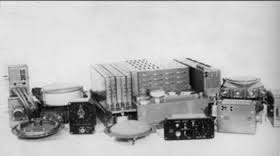 Hybrid analogue/digital radar warning receiver. Sucessor to the Sirena-3M. Specifications were agreed upon in 1969, project was launched in 1970. Entered service in the late 70s.
Hybrid analogue/digital radar warning receiver. Sucessor to the Sirena-3M. Specifications were agreed upon in 1969, project was launched in 1970. Entered service in the late 70s.
SPO-15 is comprised of the following components:
forward azimuth antennae
control centre
cockpit indicator station
HF converters
reciever
computer
elevation angle antennae
Power supply
Long range antennae

Image @blackknightssquadron.com
The outer yellow lights represent the azimuth angle of the most threatening target. The light will remain lit for 8-12 seconds, so a scan rate less than this will result in a permanently lit light. The inner green dots show all other targets. The lights will indicate the approximate direction. If the emitter lies in a direction between two lights both adjacent lights will light up. The six lights across the bottom represents 6 target types which will show the radar type of the most threatening target. The inner ring of yellow indicators light up successively to show the strength of the received signal. As well as the visual indicator, a low pitched sound with similar characteristics to the detected radar signal will be given.
If the hostile radar switches to tracking (STT) the red circle will flash and a continuous high pitched audio tone will sound.
When a SAM launch is detected a continuous variable pitch sound will be given.
The Beryoza is claimed to be capable of detecting enemy airborne radars at 120% of the distance within which the enemy fighter can launch a missile.
Radars operating in TWS mode cannot be distinguished from search mode.
The priority target is simply detirmined by target type- one type is always considered more dangerous than another, regardless of signal strength or other factors.
Bands covered: 4.45-10.35GHz
Direction finding: ±10° (front)
Bandwidth capability: 20Khz
Weight: 25kg
Data aerospace.boopidoo.com
APP-50 IR decoy dispenser

The APP-50 passive jamming automatic units (decoy dispensers) are designed to protect aircraft from engagement in flight by airborne missile systems and air defence missile/artillery systems by dispensing radar/IR interference rounds. The dispensers are installed onboard aircraft, and can be controlled manually (from the control panel) or automatically. The APP-50 dispensers can be delivered in two variants: APP-50P for autonomous operation; APP-50A for integration into onboard electronic support systems. The dispenser can launch rounds (up to three types) in continuous, salvo, combined and emergency modes. Launch time intervals, number of salvos and number of rounds in one salvo (from 1 to 4) are set by operator or by the electronic support system.

81.cn
Developer and manufacturer: Gorizont JSC
Performance:
| Launch altitude envelope, m |
0 – 30, 000 |
| Launch time intervals, sec |
0,1 – 8,0 |
| Round types |
PRP-50, PPI-50 |
| Caliber, mm |
50 |
| Number of rounds |
24 |
| Dispenser weight (loaded), kg |
53 – 56,5 |
| Launch modes |
continuous, salvo, by series |
Data ktrv.ru
Sorbtsiya active jamming ECM pods on its wingtip

Newer Flankers carry the podded wingtip mounted KNIRTI SPS-171 / L005S Sorbtsiya-S mid/high band defensive jammer (ECM), this system being an evolution of a jammer developed for the Backfire C. The Sorbtsiya-S, unlike most Western jamming pods, is designed to operate in pairs and uses forward and aft looking steerable wideband phased arrays to maximise jamming effect, a similar arrangement to the Eurofighter Typhoon EWSP package. It is worth observing that the Sorbtsiya is clearly built to provide cross-eye jamming modes against monopulse threats, and the wideband mainlobe steering capability provided by the phased array permits best possible utilisation of available jamming power. A graded dielectric lens is employed. Russian contractors have been recently using Digital RF Memory (DRFM) technology, which is of the same generation as the US IDECM EWSP, and competing Israeli systems. Source ausairpower.net
The fixed weapon includes a GSh-301 30mm cannon fitted internally with 150 rounds of ammunition. The aircraft has ten external hardpoints (2 tandem under the fuselage centre-line; 2 under the air ducts; 4 under the wings; 2 on the wingtips) to carry up to 8,000 kg weapon payload. For visual-range air-to-air combat, the aircraft is equipped with the Vympel R-73 (NATO reporting name: AA-11 Archer) IR-homing short-range AAM. For BVR combat the aircraft is equipped with the R-27 (NATO reporting name: AA-10 Alamo) semi-active radar-homing medium-range AAM, in both long and short burn variants.
GSh-301 30mm cannon

The Gryazev-Shipunov GSh-30 (ГШ-30) is a family of autocannons used on certain Russian military aircraft.
The GSh-30-1 (also known as “GSh-301”) is the standard cannon armament of most modern Russian fighters including the Yak-141 Freestyle, MiG-29 Fulcrum, Su-27 Flanker and its’ various derivatives. The GSh-30-2 is carried by the Sukhoi Su-25 Frogfoot ground attack plane and in external gun pods. The GSh-30-2K is a modified version with 2400mm long water-cooled barrels and variable rate of fire. It is used on a fixed mounting on Mi-24P Hind-F helicopters.

Photo by Zhang Shu
Gryazev-Shipunov GSh-30-1
- Caliber: 30x165mm
- Operaton: Gast principle
- Length: 1978mm
- Weight (complete): 46 kg
- Rate of fire: 1500–1800 rpm
- Muzzle velocity: 860 m/s
- Projectile weight: 386-404 g (13.6-14.25 oz)
- Mounting platforms: Yakovlev Yak-141 “Freestyle”, Mikoyan MiG-29 “Fulcrum”, Sukhoi Su-27 “Flanker” (and derivatives), Sukhoi Su-34 “Fullback”
Data imfdb.org
Vympel R-73 (NATO reporting name: AA-11 Archer)

Photo by Tang Jun
R-73A
Currently the R-73 is the best Russian short range air-to-air missile. Apart from an exceptional maneverability, this missile is also directly connected to the pilot’s helmet, which allows engagement of targets lateral to the aircraft, which cannot be engaged by missiles with a traditional system of targeting and guidance. The R-73A, an earlier variant of this missile, has a 30 km range, while the most recent R-73M can hit targets at a distance of 40 km.
R-73M
The R-73 short-range, close-combat standardized missile was developed in the Vympel Machine Building Design Bureau, and became operational in 1984. The R-73 is included in the weapon complex of MiG-23MLD, MiG-29 and Su-27 fighters and their modifications and also of Mi-24, Mi-28 and Ka-50 helicopters. It also can be employed in flying craft which do not have sophisticated aiming systems.
The missile is used for engaging modern and future fighters, attack aircraft, bombers, helicopters, drones and cruise missiles, including those executing a maneuver with a g-force up to 12. It permits the platform to intercept a target from any direction, under any weather conditions, day or night, in the presence of natural interference and deliberate jamming. It realizes the “fire and forget” principle.
The missile design features a canard aerodynamic configuration: control surfaces are positioned ahead of the wing at a distance from the center of mass. The airframe consists of modular compartments accommodating the homing head, aerodynamic control surface drive system, autopilot, proximity fuze, warhead, engine, gas-dynamic control system and aileron drive system. The lifting surfaces have a small aspect ratio. Strakes are mounted ahead of the aerodynamic control surfaces.
The combined aero-gas-dynamic control gives the R-73 highly maneuverable flight characteristics. During flight, yaw and pitch are controlled by four aerodynamic control surfaces connected in pairs and by just as many gas-dynamic spoilers (fins) installed at the nozzle end of the engine. Control with engine not operating is provided by aerodynamic control surfaces. Roll stabilization of the missile is maintained with the help of four mechanically interconnected ailerons mounted on the wings. Drives of all missile controls are gas, powered from a solid-propellant gas generator.
The passive infrared homing head supports target lock-on before launch. Guidance to the predicted position is by the proportional navigation method. The missile’s combat equipment consists of an active proximity (radar or laser) fuze and impact fuze and a continuous-rod warhead.
The engine operates on high-impulse solid propellant and has a high-tensile steel case. Russia’s Vympel weapons designers have developed a one-of-a-kind air-to-air missile, which NATO has dubbed as AA-11, for use on foreign fighter planes. Techically and militarily the new missile, meant for quick-action dogfights, leave its foreign analogues far behind. Vympel experts have also made it possible for the new missile to be easily installed on all available types of aircraft. The AA-11 can also be used on older planes which will now be able to effectively handle the US’ highly maneuverable F-15 and F-16 jets. The AA-11 missile is based on all-new components, use new high-energy solid fuel and an advanced guidance and control system which has made it possible to minimize their size. Their exceptionally high accuracy is ensured by the missile’s main secret, the so-called transverse control engine, which rules out misses during the final approach trajectory. The transverse control engine is still without parallel in the world.

Photo by Tang Jun
Russia has offered the export-version R-7EE air-to-air missile system for sale so that it can be fitted to foreign-made fighter aircraft. Developed by the Vympel state-sector engineering and design bureau, the R-7EE is designed for close-quarters aerial combat. Vympel specialists have developed a way of ensuring that the missile system can be fitted to virtually any type of aircraft. It can be fitted to older aircraft, which feature heavily in third-world countries’ air forces.
| Contractor |
Vympel |
| Date Deployed |
1980s |
| Range |
20 km (R-73M1) 30 km (R-73M2) 40 km |
| Speed |
Mach 2.5 |
| Propulsion |
One solid-propellant rocket motor |
| Guidance |
All aspect Infrared |
| Warhead |
7.4 kg HE expanding rod warhead |
| Launch Weight |
105 kg (R-73M1) 115 kg (R-73M2) |
| Length |
2.9 m |
| Diameter |
170 mm |
| Fin Span |
0.51 m |
| Platforms |
Su-27, Su-33, Su-34, Su-35, Su-37, MiG-29, MiG-31, MiG-33, Yak-141, Ka-50, Ka-52 |
Data fas.org Images sourced from the net
R-27 (NATO reporting name: AA-10 Alamo)

Photo by Tang Jun
Medium-range missiles R-27 (e), designed to intercept and destroy aircraft and helicopters of all types of unmanned aerial vehicles and cruise missiles in a dogfight at medium and long distances, with individual and group actions carrier aircraft, day and night, in simple and adverse weather conditions, from any direction, against the background of the earth and the sea, with active information, firing and maneuvering countering enemy.

27R SARH air-to-air missiles – Image @digitalcombatsimulator.com
Available in several versions, differing use of two types of homing – semi-active radar (PARGS) and heat – and two types of propulsion systems – with standard and increased installed power. Modifications PARGS are designated R-27R and R-27ER, with TGS – R-27T, R-27ET, with propulsion of increased energy available – R-27ER and R-27ET.
Main material rocket design titanium alloy, a steel motor housing .
For the suspension to the carrier aircraft and launch weight of both modifications missiles used the same launchers rail and catapult type.

R-27ET IR air-to-air missiles extended range – Image @digitalcombatsimulator.com
The rail trigger APU-470 is used for the deployment of missiles under the wings of the aircraft, and the ejection device AKU-470 for the deployment of missiles under the fuselage and under the wings.

Data airwar.ru
In a typical interception mission, the aircraft carries four R-73 and six R-27 missiles. Alternatively, the aircraft could carry two R-73 missiles, six R-27 missiles, and two KNIRTI SPS-171/L005 Sorbtsiya active jamming electronic countermeasures (ECM) pods on the wing-tips for self-defence.
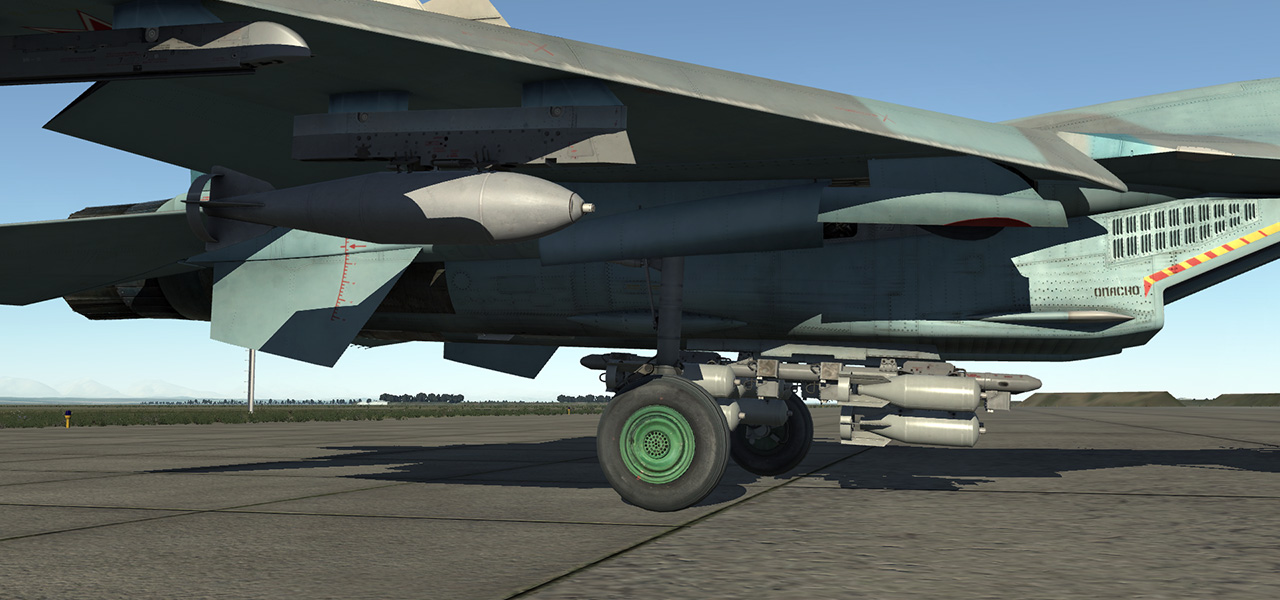
High explosive general purpose bombs FAB-100, FAB-250, FAB-500 – @digitalcombatsimulator.com

Concrete piercing bombs BetAB-500 – Image @digitalcombatsimulator.com

Cluster munitions RBK-250, RBK-500, KMGU – Image @digitalcombatsimulator.com

Rockets S-8, S-13, S-25 – Image @digitalcombatsimulator.com
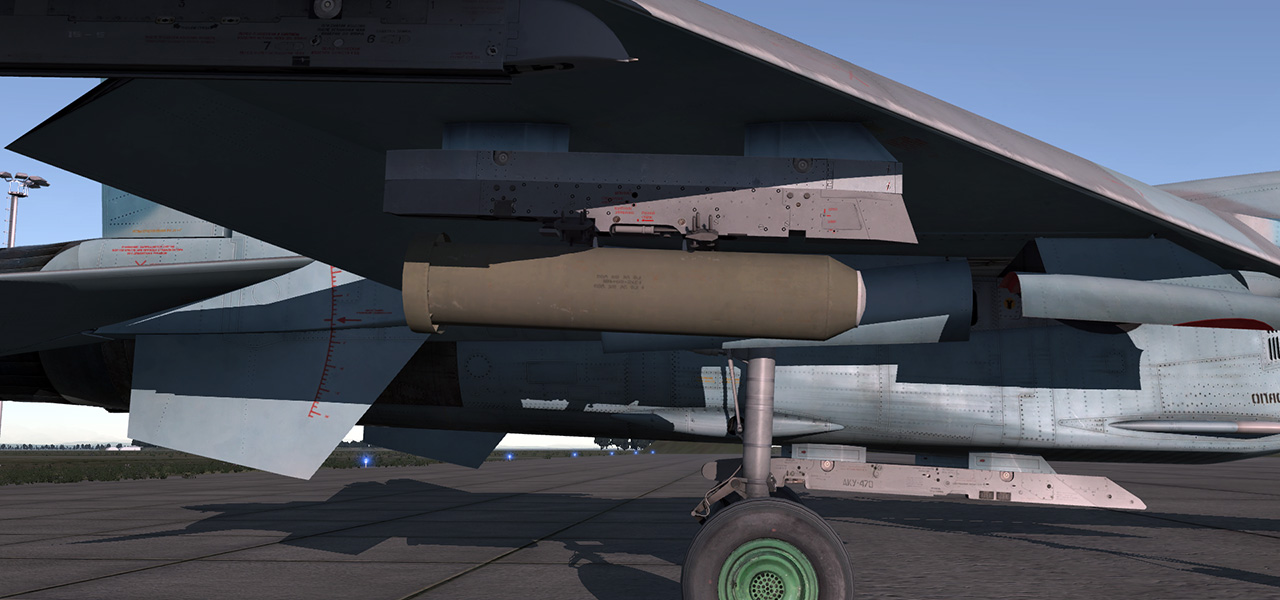
Illumination bomb SAB-100 – Image @digitalcombatsimulator.com
One shortcoming of the basic variant Su-27 is its lack of air-to-ground weapon options. The aircraft was originally designed as an air-superiority fighter, with ground attack as a secondary role. The aircraft cannot carry any precision-guided weapons, and relies on low-drag free-fall bombs and unguided rocket launchers for ground attack, which exposes the expensive fighter to enemy air defence fire power in combat.
Imports of the Su-27
High-level negotiations between Beijing and Moscow over a possible fighter deal began in 1990. Soviet pilots demonstrated the Mikoyan-Gurevich MiG-29 Fulcrum and Sukhoi Su-27 Flanker fighters in Beijing in March 1991. After careful evaluations, China signed the contract for 26 Su-27 fighters, including 20 in the single-seat Su-27SK (‘Flanker-B’) variant and 6 in the two-seat Su-27UBK (‘Flanker-C’) variant. The delivery of these aircraft was completed by 1992, making China the first non-CIS country to operate the fighter. These aircraft were initially operated by the PLAAF 3rd Aviation Division / 7th Fighter Regiment at Wuhu Airbase, Anhui Province. Along with the aircraft, the PLAAF also received unknown numbers of the R-27 medium-range AAM and the R-73 short-range AAM.

Su-27UBK (‘Flanker-C’) variant
After showing interest in acquiring a second batch in 1993, China ordered 22 examples (16 Su-27SKs and 6 Su-27UBKs) in 1995 in a deal worth about US$710 million. In reporting to the United Nations, both China and Russia confirmed that the transfer of 22 aircraft took place in 1996. A Russian source noted that China requested special modifications for its aircraft, which included strengthened landing gear to enable the aircraft to carry its designed fuel load and enable its intended 1,400 km combat radius. These aircraft are operated by an aviation regiment organic to the PLAAF 2nd Aviation Division at Suixi Airbase, Guangdong Province.
In 1995, China expressed interest in a licensed co-production of the Su-27. In 1996, Sukhoi Company (JSC) and SAC entered into a contract worth US$2.5 billion for the co-production of 200 Su-27 fighters as the J-11. Under the terms of the agreement, Sukhoi/KnAAPO would supply the aircraft in kit form to be assembled in SAC. Russia was also responsible for supplying China with the avionics suite and AL-31F turbofan engines for the J-11 production.
The J-11 production appeared to be limited to the single-seat Su-27SK Flanker-B variant only. A lack of comparable training aircraft forced the PLAAF to order the third batch of 28 Su-27s, all in the two-seat UBK fighter-trainer variant. The delivery of these aircraft took place in 2002 and they were initially deployed by the PLAAF 33rd Aviation Division at Baishiduo Airbase, Chongqing.
The PLAAF-operated Su-27 was first seen in action in 1996, when Chinese state television images showed the aircraft flying in four-plane formation and firing rockets at ground targets during a PLA exercise near the Taiwan Strait. In summer 1999, Suixi-based Su-27s flew round-trip missions over the Taiwan Strait during the PLA joint exercises. However, it took probably a decade for the PLAAF to become really proficient in operating the aircraft. At least five examples were reportedly destroyed during a typhoon in 1998, with more lost in flight training accidents over the years.
A number of reasons may have contributed to the stop of the J-11 production. Firstly, the co-production agreement did not include the transfer of avionics and engine technologies, and the Chinese-built J-11 would have to continue relying on the Russian supply of these systems. Secondly, the Russian-made fire-control system on the J-11 is not compatible with the Chinese missiles. As a result, the PLAAF had to import additional R-27 (AA-10) MRAAM and R-73 (AA-11) SRAAM from Russia to support the operations of its J-11s. Thirdly, as a single mission air superiority fighter, the Su-27SK/J-11 could only perform secondary attack missions, and only with “dumb” munitions that include a range of free-fall bombs and unguided rockets.
Sukhoi Company JSC actively marketed its Su-27SKM to the PRC in 2003. The Su-27SKM was a modernised multi-role variant derived from the Su-27SK, but with an improved Zhuk-27 (or N001VEP on the later variant) fire-control radar, and an upgraded cockpit featuring multifunctional displays similar to that of the Su-30MK. However, the aircraft was rejected by the PLAAF in favour of an ‘indigenised’ variant of the J-11. Source airforceworld.com
Development of the Shenyang J-11
The first aircraft assembled in Shenyang was flight tested in December 1998. Full-scale production was delayed because of technical issues.
About 100 aircraft were manufactured by 2003. Production ceased subsequently, as the basic J-11 variant did not meet the PLAAF requirements.
J-11 was later upgraded with Russian assistance which features two color MFDs in the cockpit replacing the old monochrome radar scope. One normally serves as a digital moving map display (coupled with GPS). The aircraft can also fire the newly acquired R-27RE1 SARH AAM with an extended range of 66km. This variant (dubbed J-11A?) first flew in December 1999. Recent images indicated that J-11A can also fire the actively guided R-77, suggesting an improved fire-control system with new software and hardware. This may have been the result of assistance from Ukraine or Belarus. A further upgraded variant dubbed J-11B was developed as well (see below). The first phase production concluded by the end of 2006 after a total of 105 J-11s were produced in 4 batches. The production has been switched to J-11B in the subsequent phase.Recent images (November 2014) indicated that some (S/N 20x5x, 11x3x) have been upgraded with two UV band MAWS antennas behind the cockpit plus two on the vertical tailfins to provide coverage for both forward and rear hemispheres. Source chinese-military-aviation.blogspot.com
Sukhoi offered its Su-27SKM fighter to China in 2003. It was a modernised multirole variant based on the Su-27SK. The PLAAF rejected the aircraft in favour of a domestic variant of the J-11.
SAC unveiled a mock-up J-11B aircraft in 2002. It is an upgraded multirole variant of the J-11. The company delivered the first test aircraft to the China Flight Test Establishment (CFTE) for evaluation in 2006.

J-11 HUD in it’s sights at an exercise between the People’s Liberation Army Air Force (PLAAF) @chinesemilitaryreview.blogspot.com
Design of the multirole fighter aircraft

Designed based on the Su-27SK, the airframe of J-11 is made of titanium and aluminium alloys. The fuselage section integrates the cockpit, radar sections and avionics bay. The basic J-11 version incorporates Russian-made components. The indigenously built J-11B uses the same airframe and is equipped with Chinese-built avionics and weapon systems.

The J-11 has a length of 21.9m, wingspan of 14.7m and a height of 5.9m. The wing area of the aircraft is 62m². The aircraft has a maximum take-off weight of 33,000kg.
J-11B

J-11B – chinamil.com.cn
SAC unveiled its intension to develop an ‘indigenised’ version of the J-11 by unveiling a J-11 mock-up carrying various Chinese air-to-air and air-to-surface missiles in mid-2002. Russian sources also confirmed that SAC was developing an unlicensed copy of the Su-27 without Russian-supplied kits and systems. The aircraft, which was designated J-11B, entered operational service with the PLAAF in 2007 and the PLA Naval Air Force in 2010.
The J-11B was based on the Su-27/J-11 airframe, but incorporated with Chinese-made engines and systems. Its improvements include:
- The Chinese Type 1493 multifunctional pulse-Doppler fire-control radar, reportedly capable of tracking 6—8 targets and engaging 4 of them simultaneously;
- An indigenous digital flight-control system;
- A Chinese copy of the Russian OEPS-27 electro-optic search and tracking system;
- A strap-down INS/GPS navigation system;
- A ‘glass’ cockpit featuring four colour multifunctional displays (MFD) and a wide-angle holographic head-up display (HUD);
- A missile approach warning system (MAWS), with two sensors installed on both sides of the tail boom to provide coverage for the rear hemisphere;

The aircraft is armed with the Chinese-made PL-8 IR-homing SRAAM and PL-12 active radar-homing MRAAM. While the Su-27/-30 and R-77 (AA-12 Adder) combination could only offer a two-target engagement capability, successful integration of the PL-12 on the J-11B would likely provide a genuine multi-target engagement capability.
PL-8 IR-homing SRAAM (Python 3)

It has been rumored for a long time that Israel sold the Python-3 technology to China in the 80s, although this was never publicly acknowledged by either side. The result is PL-8 (K/AKK-8?), an all-aspect IR-guided AAM distinguished by its unique swept tail stabilizing fins and a large warhead (11kg). Several variants were developed,including the original PL-8, the improved PL-8A (with more domestic components) and the latest PL-8B. PL-8B was first discovered in mid-2005 featuring a PL-9 style all-aspect InSb seeker and a programmable digital processor, which offer a wider off-boresight angle. Its range has been increased to 20km. The missile is also compatible with Chinese made HMS. Since then this version has replaced PL-8/8A. PL-8B has been seen carried by J-7D/E/G, J-8D/H/F, J-10/A/B, J-11B, JL-9 and JH-7A replacing the old PL-2B/PL-5B. Currently the missile is the primary dogfight weapon in PLAAF’s arsenal until the new PL-10 enters the service (see below). Source chinese-military-aviation.blogspot.com
PL-12/SD-10 active radar-homing MRAAM

The PL-12 is claimed to have an operational ceiling of at least 21 km, with a maximum effective range of 100 km and a minimum engagement range of 1,000 m. The missile has a 38+ g manoeuvering limit and, according to CATIC, it has been tested for a 100-hour captive ‘live flight’ life. According to Chinese claims, PL-12 is more capable than the American AIM-120 A/B, but slightly inferior than the AIM-120C. Source airforceworld.com
PL-12 (K/AKK-12?) was under development at LETRI/607 Institute since early 90s. The missile was expected to be in the same class as AIM-120A/B and its active seeker may have evolved from the earlier AMR-1 design (R-129? based on Russian 9B-1348 seeker & datalink for R-77). Its tailfins appear to have fin tips as well as the leading edges of the fin root cropped. These specially designed tailfins are believed to possess lower drag for greater speed and higher torque for better maneuverability. Two datalink antennas can be seen next to the nozzle for mid-course correction. Several dielectric strips are seen along the middle warhead section which house the radio proximity fuse. PL-12 completed its development test in December 2004 and was certified in 2005. Its export version is called SD-10 (SD-10A as the improved version) and was first revealed to the public during the 2002 Zhuhai Airshow. Currently it is in the service with J-8F, J-10, J-11B, J-15 and Su-30MK2. In addition SD-10A is being carried by JF-17 currently in service with PAF. Some specifications of SD-10: length 3,850mm, diameter 203mm, wing span 674mm, weight 180kg, max g-load 38g, max speed 4M, range 60-70km. Recently produced PL-12 is expected to feature an improved seeker with new digital processor and SINS. The improved PL-12 (PL-12A?) is thought to be comparable to American AIM-120C4. It was reported in November 2010 that PL-12 may feature an active/passive dual mode seeker in order to achieve greater ECCM capability and kill probability. Source chinese-military-aviation.blogspot.com

chinamil.com.cn
The J-11B is also expected to have enhanced air-to-surface attack capabilities with the indigenous precision-guided ammunitions such as LT-2 laser-guided bomb, the LS-6 precision-guided glide bomb, the YJ-91 (Kh-31P) anti-radiation missile, and the KD-88 air-to-surface missile.
SAC has developed the WS-10A ‘Taihang’ turbofan engine, which is believed to be similar to the Russian AL-31F in both technology and performance. The first WS-10A-powered J-11B made its maiden flight in 2004. However, the engine has reportedly suffered from serious design flaws after entering service in 2007, causing delay in the J-11B production. The issues with the WS-10A engine were reportedly resolved later and new batches of the J-11B are now fitted with Chinese engines.
J-11BS
The two-seat fighter-trainer variant of the J-11 was designated J-11BS. The aircraft is generally similar to the Su-27UBK (‘Flanker-C’), but fitted with Chinese engines, avionics, and weapon suite.

Image @chinesemilitaryreview.blogspot.com
Shenyang J-11 cockpit and avionics
The glass cockpit of J-11 accommodates a single pilot. It is equipped with colour multifunctional displays (MFDs), a head-up display (HUD), helmet-mounted sight (HMS) and an indigenous digital flight-control system.

Pilot of J-11 with HMS @errymath.blogspot.com
The avionics suite integrates an IFF system interrogator, attitude and heading reference system, automatic direction finder, electro-optic search and tracking system, INS/GPS navigation system, fire control radar and indigenous multifunctional pulse-Doppler radar. The onboard automatic monitoring system includes an early warning system, flight information recording system and emergency situation warning equipment.
Armament and weapons on the Chinese aircraft

chinamil.com.cn/Photo by Wan Quan
The aircraft is armed with a 30mm GSh-30-1 cannon. The ten hard points provided on the aircraft are capable of carrying wide range of missiles, including PL-12 radar-guided air-to-air missile, PL-9 short-range, infrared-homing air-to-air missile (AAM), PL-8 air-to-air missile, Vympel R-77 medium range air-to-air missile, Vympel R-27 medium-to-long-range air-to-air missile and Vympel R-73 short-range air-to-air missile.
Luoyang PL-9

The PL-9 was introduced during the 1990s, and is a separate evolution of the PL-5 series, with capabilities similar to the AIM-9L/M (image © 2009, Zhenguan Studio) @ausairpower.net
PL-9 IR-guided missile was first developed in the late 80s based on PL-8/Python-3 technology and is for export only. It has an all-aspect InSb seeker and a radio fuse. Its range is 500m minimum and 16km maximum. Speed is Mach 3.5 and load is 40g. Its forward control fins look similar to those of AIM-9L (double delta). The latest variant of PL-9 is called PL-9C with improved multi-band IR seeker and a new programmable digital processor giving it a greater IRCCM capability and higher killing probability. Its range is also increased to 20km. Source chinese-military-aviation.blogspot.com
The PL-12 carries a high explosive fragmentation warhead for a maximum range of 100km. The aircraft also carries an unguided rocket launcher and free-fall cluster bombs.
Countermeasures, engines and performance

chinamil.com.cn
The electronic countermeasures equipment aboard the J-11 include radar warning receiver, chaff and flare dispensing system and radio jamming transmitter.
The J-11 is powered by two Lyulka AL-31F or FWS-10A Taihang turbofan engines. Each engine is capable of developing a dry thrust of 75.22kN / 89.17kN and afterburner thrust of 123kN / 132kN.
WS-10A

WS-10A
| Specifications |
| Contractor |
(Su-27SK) KnAAPO at Komsomolsk-na-Amur
(Su-27 UBK) IAPO at Irkusk
(J-11/B/BS) Shenyang Aircraft Corporation |
| Variant |
Su-27SK ‘Flanker-B’: single-seat fighter;
Su-27UBK ‘Flanker-C’: two-seat fighter-trainer;
J-11: Chinese-assembled licensed copy of the Su-27SK;
J-11B: unlicensed copy of the Su-27SK, with Chinese weapon, engine and avionics;
J-11BS: two-seat fighter-trainer version of the J-11B; |
| Power plant |
Su-27: 2 x Lyulka-Saturn AL-31F turbofan, each rated at 75.22 kN (7,670 kgf, 16,910 lbf) dry and 122.6 kN (12,500 kgf, 27,560 lbf) with afterburning;
J-11: 2 x SAC WS-10A Taihang turbofan |
| In-flight refuelling |
no |
| Length |
21.94m |
| Wingspan |
14.70m |
| Height |
(Su-27SK/J-11) 5.92m; (Su-27UBK/J-11BS) 6.36m |
| Weight |
empty: (Su-27SK) 16,380kg (36,115 lb); (Su-27UBK) 17,500kg (38,580 lb)
normal T/O: (Su-27SK) 23,140kg (51,015 lb); (Su-27UBK) 24,140kg (53,220 lb)
max T/O: (Su-27SK) 33,000kg (72,750 lb); (Su-27UBK) 30,450kg (67,130 lb)
fuel: (Internal) 9,400kg (20,725 lb)
weapon load: 4,000kg (8,820 lb) normal load; 8,000kg (17,640 lb) maximum allowable load |
| Speed |
at altitude:
(Su-27SK) 2,500km/h (1,555 mph) at 11,000m (36,090 ft), Mach 2.35
(Su-27UBK) 2,150km/h (1,335 mph) at 11,000m (36,090 ft), Mach 2.0
at sea level: 1,400km/h (870 mph), Mach 1.14 |
| Service ceiling |
(Su-27SK) 19,000m (60,700 ft); (Su-27UBK) 17,500m (57,400 ft) |
| Range |
typical range: 2,800km (1,510 nm); ferry range: (Su-27SK) 3,720km (2,010 nm), (Su-27UBK) 3,000km (1,620 nm) |
| Armament |
one internal GSh-30-1 30mm cannon with 150 rounds; 10 external hardpoints; R-27 (AA-10) semi-active radar-homing MRAAM; R-73 (AA-11) IR-homing SRAAM; 250kg/500kg low-drag general-purpose bombs; Unguided rocket launcher pods; |
| Radar |
NIIP Tikhomirov N001E Myech coherent pulse Doppler radar; OEPS-27 electro-optic system; |
| Crew |
one (Su-27SK/J-11/J-11B); two (Su-27UBK/J-11BS) |
Data sinodefence.com
Zhuhai Air Show 2014 : WS-10 engine is now fully operational and matured: HERE
The FWS-10A TaiHang turbofan engine was unveiled during the 6th Zhuhai Air Show in 2006. The engine is believed to be similar to the Russian-made AL-31F turbofan engine in terms of technology and performance.
The aircraft can fly at a maximum altitude of 19,000m. It has a rate of climb of 300m/s.
The J-11 has a maximum speed of Mach 2.35 and a range of 3,530km. The maximum flight speed at sea level without external weapons and stores is 1,400km/h.
Main material source airforce-technology.com
Images are from public domain unless otherwise stated
Main image by Photo by Yang Pan
Updated Feb 04, 2021

Visual identification first (above: Imported Su27SK—middle: SAC’s J11 —-below: J11B..)
1. the Painting Theme is different…Ex. Su27/J11 has a “Gray” head, and J11B has a “Black” one
2. the Wing tip pylons…J11B’s Pylons is for PL8B SRAAM with a much larger wingspan which makes the pylons a bit thicker. Source defenceforumindia.com
![[IMG]](https://i0.wp.com/i.imgur.com/2o9d70T.jpg)
Chinese Air Force finds the secret of aircrafts’ one minute slower in taking off – Falcon Strike 2015

Thailand’s pilots before China’s J-11 fighters @china-arms.com
“Liberation Army Daily” reported recently that during a joint military exercise between Chinese Air Force and a foreign air force in an overseas place, Chinese pilots were very confused that China’s aircrafts were always one minute slower than foreign aircrafts in taking off, as the runway is the same and the aircrafts have similar performance.
After times of observation, contrast and analysis, the truth came out: Chinese fighter jets always take the outer lane in turning off, while foreign fighters always take the inner lane.

China’s J-11 vs Thailand’s JAS 39 Gripen in drill @china-arms.com
Chinese pilots felt wronged and shocked, as they were taught to turn off in that way, and thus took it as a standard. But such detail could determine success of failure of a war, and they were totally unaware of it.
The daily called on PLA to exercise like fighting a battle, and to fight a battle like exercising. Xi had required Chinese army to train under circumstances close to actual combats in 2013.
China and Thailand just held a joint air exercise at a Thai air base from November 12th to 30th. China sent J-11 fighters and Thailand used its latest version of JAS-39C/D Gripen fighters. China also sent J-10 Bayi (August 1) Aerobatics Team to the air base in Thailand. Source china-arms.com
J-11A fighters from China attend joint drill in Thailand: Here
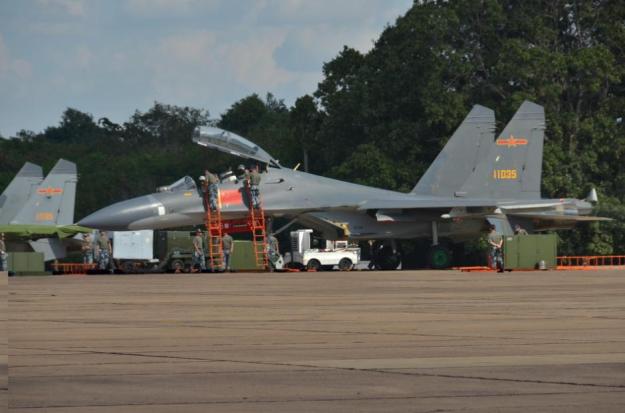
Outcome of China and Thailand First Strike Falcon Joint Military Exercise: Here

RTAF Saab Gripen C/D: Details

Other Chinese joint excercises
An unexpected military cooperative exercise between China and Turkey has caught the eye of Washington-based analysts. The two air forces were involved in a joint air exercise in the central Anatolian province of Konya, the first such exercise involving the air forces of China (People’s Liberation Army Air Force – PLAAF) and NATO member Turkey. Part of the significance is that the PLAAF recently demonstrated major advances in long-range strike during their own “Peace Mission 2010.”
The latest joint exercise, “Anatolian Eagle,” in the past has been conducted jointly with the U.S. Air Force, other NATO air forces and the Israeli Air Force.
Ankara’s Zama newspaper reported that Turkish F-16s and Chinese Su-27s staged a mock dogfight. Chinese Prime Minister Wen Jiabao plans a visit to Turkey next month where several agreements on economic and cultural cooperation are expected to be signed. Chinese aircraft, including the JF-17 export fighter, stopped in Turkey to refuel on the way to last summer’s Farnborough air show. Source airforceworld.com
During air sino-pakistanais “Shaheen VI” a J – 11b “beat” two JF-17 in a dogfight 1 vs 2: Here

New type J-11D fighter prototype equipped with new radome
Recently Chinese military fan shot a series of photos of a new type prototype of J-11 fighter, which is still covered by yellow coating, and shows obviously different radome compared to past types of J-11 series.

Tony

Tony
Observers think the new type radome proves that this prototype of J-11 fighter has used a new-type radar.

Before this, a new J-11 fighter numbered D1101 was found having line-styled missile mounts, instead of traditional trapezoidal mounts adopted by J-11 Basic and J-11B fighters. it was analyzed that such mounts are used for mounting advanced PL-10 high-mobility combat missiles, so this is a type of air-superiority fighter. Posted November 16, 2015 Source china-arms.com





















 Hybrid analogue/digital radar warning receiver. Sucessor to the
Hybrid analogue/digital radar warning receiver. Sucessor to the 

































![[IMG]](https://i0.wp.com/i.imgur.com/2o9d70T.jpg)












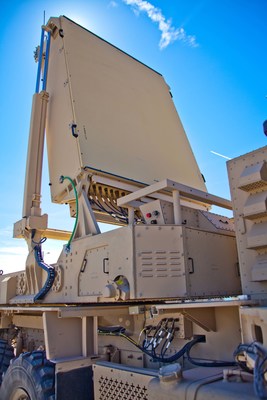






 The Arleigh Burke-class guided-missile destroyer USS Gravely in the Atlantic Ocean (archive)
The Arleigh Burke-class guided-missile destroyer USS Gravely in the Atlantic Ocean (archive) 

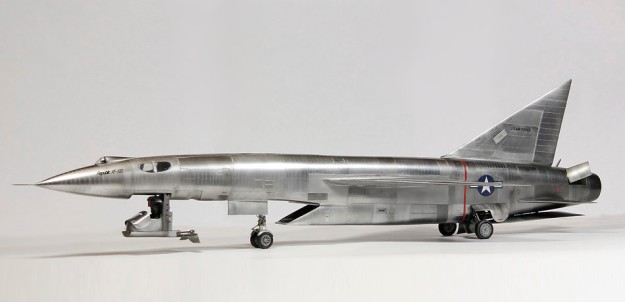




 A Japanese Maritime Self-Defense Force P-3C anti-submarine patrol aircraft.
A Japanese Maritime Self-Defense Force P-3C anti-submarine patrol aircraft.



















